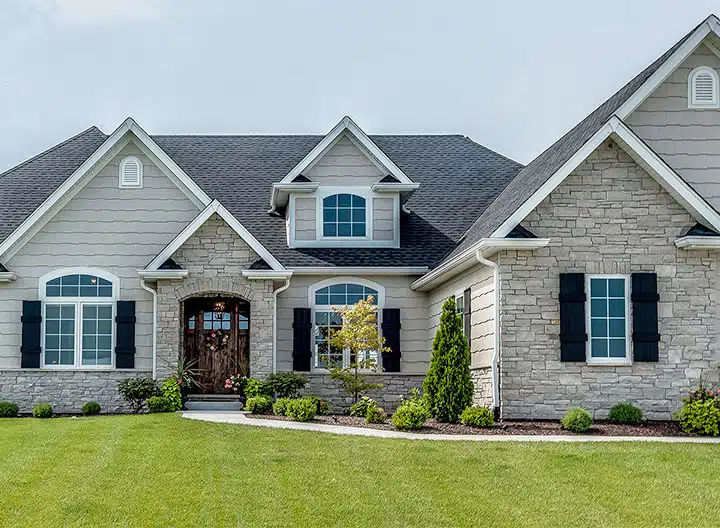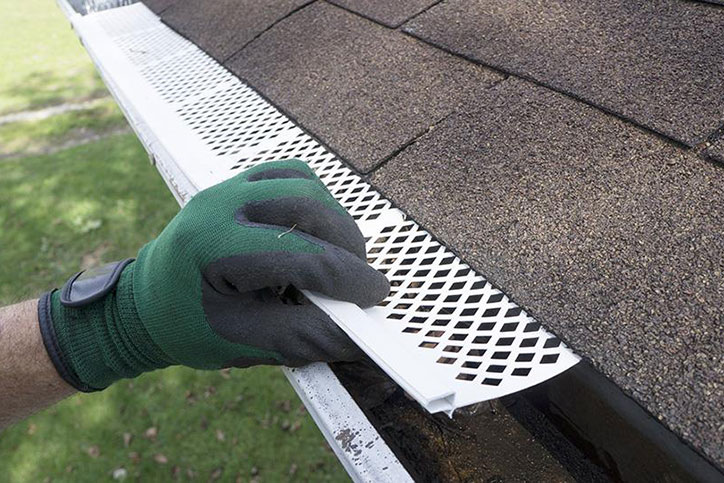Gutter guards can reduce gutter cleaning, improve the efficiency of your gutters, and extend the lifespan of the entire gutter system. Some styles do this better than others, so it’s important to invest in the right gutter guards. Let’s take a look at which gutter guards work best to help you plan for your home.
Types of Gutter Guards
There are several styles of gutter guards, and each one is designed for a different purpose. The most common types of gutter guards include:
- Screen Gutter Guards: Some of the least expensive gutter guards on the market, and some of the easiest to install. Screen gutter guards are held down by the weight of roof shingles and do not need to be screwed down for installation. However, they are not as stable as other gutter guards, and small debris can still fall through the holes in the screen.
- Mesh Gutter Guards: Mesh gutter guards and micromesh gutter guards are made to filter out small debris, such as pine needles. They are more expensive than other materials, but they do a superior job at keeping gutters clean in autumn. If you find yourself cleaning your gutters every few weeks because of tiny debris, these gutter guards can save you a ton of time and effort in the future.
- Bottle Brush Gutter Guards: These gutter guards consist of a large brush that sits in the gutters. Leaves are caught at the top of the brush, preventing them from flowing into the downspouts. While brush guards can be effective for certain homes, we don’t recommend them. They tend to make gutter cleaning a pain over time, and they are not as effective as screen or mesh guards.
- Foam Gutter Guards: If we had to pick the worst type of gutter guard, foam guards would likely win the title. These guards consist of foam that goes into the gutters to block leaves from falling through. The pores in the foam are supposed to let water flow smoothly, but these guards tend to overflow in high levels of precipitation. The foam also deteriorates quickly and may mold from trapped moisture, forcing you to replace your gutter guards every year or every other year. Avoid this and opt for a more long-term investment.
- Reverse Curve Gutter Guards: Reverse curve gutter guards have been around for decades, but they’re no longer a good solution for most homes. They have a sloped top that encourages water to flow into the gutters and guides leaves away from them. However, these gutter guards are visible from the ground and only available in a limited range of colors. They’re also prone to clogging, difficult to clean, and known for creating large icicles in the winter. This may not be an issue in some parts of the country, but in Michigan, it’s a major consideration.
Choosing the Best Gutter Guards for Your Specific Needs
Since there are many types of gutter guards available, it’s important to select the right one for your property. Mesh gutter guards will stand up to almost anything, but they are not necessary for all homes. We can evaluate your needs during your consultation to recommend the best gutter guards for you.
Unlike other gutter installers, Sargent Gutters & Siding will never overcharge you for a product you do not need. We saved one customer almost $600 by installing mesh guards on one half of the house and leaf guards on the other half. The customer still received sufficient protection for the entire house, but we only installed mesh guards on the side of the property with pine trees. We put our customers first and treat them with the respect they deserve.
Consider Gutter Repair before Getting Gutter Guards
Before getting gutter guards, make sure to complete all necessary gutter repairs and/or gutter replacement. Gutter guards are only effective if they have a good foundation to sit on. We will clean and inspect your gutters prior to installing gutter guards to maximize their efficiency and longevity.




